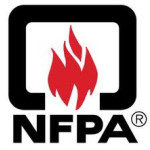- 産業: Fire safety
- Number of terms: 98780
- Number of blossaries: 0
- Company Profile:
Established in 1896, NFPA's mission is to reduce the worldwide burden of fire and other hazards on the quality of life by providing and advocating consensus codes and standards, research, training, and education.
Class-IA, -IB, -IC, or -II liquids or Class-IIIA or -IIIB liquids heated to within 10°C (50°F) of their flash point, or pressurized to 174. 4 kPa (25. 3 psi) or more.
Industry:Fire safety
Classes of seams that designate minimum sewn seam requirements.
Industry:Fire safety
Class K fires are fires in cooking appliances that involve combustible cooking media (vegetable or animal oils and fats).
Industry:Fire safety
Class D fires are fires in combustible metals, such as magnesium, titanium, zirconium, sodium, lithium, and potassium.
Industry:Fire safety
Class B fires are fires in flammable liquids, combustible liquids, petroleum greases, tars, oils, oil-based paints, solvents, lacquers, alcohols, and flammable gases.
Industry:Fire safety
Class A fires are fires in ordinary combustible materials, such as wood, cloth, paper, rubber, and many plastics.
Industry:Fire safety
Circuits between modules and from modules to the common connection point(s) of the dc system.
Industry:Fire safety
Circuit conductors between the photovoltaic source circuit(s) and the inverter or dc utilization equipment.
Industry:Fire safety
Chemicals, biological agents, and radiological particulates that could be released as an act of terrorism. (C)BRN terrorism agents include only biological agents and radiological particulates.
Industry:Fire safety
